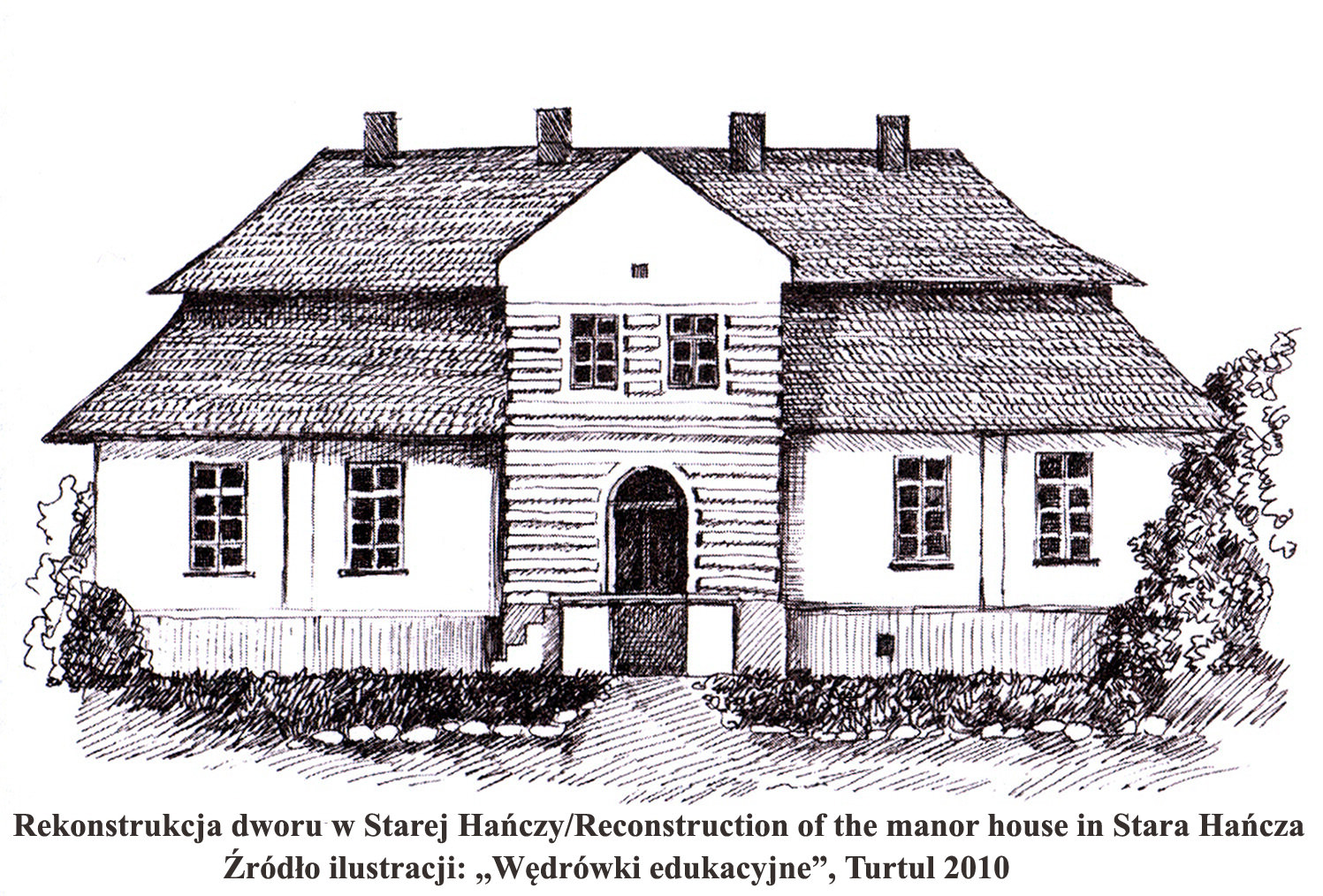Pierwsze historyczne zapiski dotyczące majątku Stara Hańcza pochodzą z XVII wieku. Najprawdopodobniej już wtedy stały tutaj jakieś zabudowania dworskie. Obecne ruiny (zachowały się w zasadzie tylko piwnice) są pozostałością budynku dworskiego, który został zbudowany w XVIII wieku, a następnie prawdopodobnie przebudowany w XIX w. Dwór położony był malowniczo na wzgórzu, z którego rozciągał się widok na jezioro Hańcza. Od południowego-wschodu otaczał go sad, ogród i park z zachowaną do dzisiaj aleją lipową. Od strony zachodniej sąsiadowały z nim budynki gospodarcze (resztki fundamentów można jeszcze odszukać) oraz stawy rybne.
W XIX w. majątek i dwór wielokrotnie zmieniały właścicieli. Dopiero początki XX wieku, kiedy to Starą Hańczę nabyła rodzina Beegerów, przyniosły stabilizację. W czasie II wojny światowej Beegerowie zostali jednak usunięci z dworu przez Niemców, budynek dworski stał się siedzibą leśnictwa, a majątek zaczęto zalesiać. Po wojnie budynek został przekształcony w posterunek milicji i wkrótce spłonął w niewyjaśnionych okolicznościach. Jedna z wersji przyczyn pożaru głosi, że pożar spowodowali nieumyślnie sami milicjanci, którzy produkowali tutaj bimber.
By odnaleźć pojemnik musisz:
a) udać się pod współrzędne skrytki. Przed sobą widzisz pozostałości dworu i tablicę informacyjną z jego historią. Podejdź do niej i znajdź rok, w którym park podworski został wpisany do rejestru zabytków. Suma dwóch ostatnich cyfr to Twoje A.
b) wejdź teraz po schodach do waypointu oznaczonego jako Stage 2. Ile stawów widzisz z tego miejsca? Oczywiście jezioro Hańcza to nie staw  . Ilość stawów to Twoje B.
. Ilość stawów to Twoje B.
Teraz pozostało Ci tylko wykonać proste podstawienie:
N 54° 17.0[A+54]
E 022° 48.9[A+82-B]

The first written records regarding the estate of Stara Hańcza come from the 17th century. The ruins which you can see now (basically only cellars have survived) are a remnant of a manor house, which was built in the 18th century, and then probably reconstructed in the 19th century. The manor house was picturesquely situated on a hill overlooking Lake Hańcza. From the south-east it was surrounded by an orchard, garden and a park with a lime tree alley preserved to this day. On the western side were farm buildings (the foundations can still be found there) and fish ponds.
In the nineteenth century the estate and the manor house changed owners several times. It was not until the beginning of the twentieth century that a kind of stabilization was achieved when the Beeger family bought the estate. During WW II Germans evicted the Beegers from Stara Hańcza and the manor house became a seat of forestry inspectorate, which started afforesting the estate. After the war the building was transformed into a post of the militia and soon burnt down in unexplained circumstances. One of the versions says that the fire was unintentionally started by the militiamen themselves while making moonshine here.
To find the container you must:
a) go to the coordinates indicated by the cache. In front of you there is an information board with the history of the manor house (including English translation). Go to the board, read the information and find the year when the manor park was entered into the registry of historical monuments. The sum of the last two digits in the year is your A.
b) climb the stairs and go to Stage 2. How many ponds can you see from that point? Of course Lake Hańcza is not a pond  . The number of ponds is your B.
. The number of ponds is your B.
Now you only need to make this simple substitution:
N 54° 17.0[A+54]
E 022° 48.9[A+82-B]
